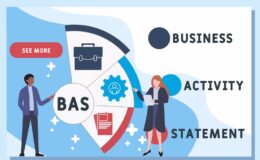
What the Australian Federal Budget 2022 means for you
After a long two years of facing the COVID-19 pandemic and nationwide lockdowns, the federal government released a new budget for the coming year on 29 March 2022. The budget addresses the supply chain disruptions, staff shortages and reduced household spending that has swept South Australia, Western Australia, New South Wales and beyond. While the budget does touch on climate change, caretaker conventions and skilled migration, this article will discuss the key takeaways that will affect your business, taxes and more.

Changes in the Australian Federal Budget 2022
Regional Australia economy researchers and the prime minister have noticed the regional development has exceeded expectations and set the country up for future prosperity and healthy growth following COVID-19 lockdowns. According to a Deloitte article, treasurer Josh Frydenberg reported $153 billion in receipts in the last year which has tipped over into giving $39 billion of that back to families and businesses.
Initially, the Australian financial review was expecting a slow, arduous recovery with a projected unemployment rate of just under 6%. Now, however, the nation is seeing a lofty 3.75% unemployment rate — a groundbreaking shift since complete lockdowns and an employee exodus.
More recently, as a result of Russian attacks on Ukraine, the world has turned to Australia for its gas, coal, iron ore and wheat. Each week that passes in which the world is depending on Australian goods puts another $1 billion back into the Australian economy.
With job growth and profits trending better than expected, personal and corporate tax collections are improving as well.
Personal and business tax update
Prime Minister Scott Morrison said in regards to the budget that "the cost of living pressure that are being faced by Australians are real. They're caused by the terrible events that we're seeing in the war in Europe." In the hopes of relieving some of those pressures, the Prime Minister has set forth several tax rate changes to benefit person and business incomes.
Personal tax rate changes
While the living tax offset and the personal tax rates have remained unchanged, there have been some adjustments to the 2021-2022 relief programs for lower- and middle-income households.
The 2022 budget includes low- and middle-income tax offset (LMITO) increases to support economic recovery. LMITO will increase by $420 for the 2021-2022 income year so that qualified people can earn up to $1,500 instead of the current maximum of $1,080. The budget does not mention an extension of benefits into the 2022-2023 income year so it still stands that increases will only apply to the current year.
The caveat to receiving the bonus is turning in your tax returns for the 2021-2022 income year. The tax benefit is only available for people who have earned between $37,001 and $90,000 and will phase out for those earning up to $126,000.
Business taxation
Entering 2022, the Australian government has enacted changes to the budget to support digital reporting projects. Due to the rising cost of repairing human error or the time it takes to complete a reporting task, technological advancement will assist in future economic growth. As a result, the 2022 budget includes incentives for small businesses (with an annual turnover of less than $50 million) to include skills development, training and digital adoption into their planning.
Some of these improvements involve:
- An improved PAYG system: Companies will calculate PAYG instalments using current financial performance plugged into business accounting software.
- Automatic reporting of taxable payments: In an attempt to help businesses avoid filing the yearly Taxable Payments Annual Report, the 2022 budget includes eligible businesses to report on their activities throughout the year via a taxable payment reporting software system.
- Payroll data sharing: Via a single-touch payroll data system through the State and Territory governments, the Australian Taxation Office (ATO) will offer payroll tax return pre-filling software.
- Skills and training boost: 20% of a small business' expenditure on external training courses for their employees can be deducted.
- Technology infrastructure boost: Small and medium businesses (with an aggregated annual turnover of less than $50 million) will be able to deduct up to 20% of their spending that supports digital adoption. This digital expenditure could include items like portable payment devices, cyber security systems or e-invoicing.
In addition to these improvements for small businesses, there is also an extension of the tax avoidance task force where the government will provide over $650 million between 2023 and 2025 to the ATO. The tax avoidance task force ensures that large, multinational enterprises are paying the right amount of tax in Australia. The additional funding will expand the ATO's assurance and compliance capabilities.
Tax compliance and integrity
The government previously promised to digitise trust and beneficiary income reporting and processing and the 2022 budget backs up this claim. Filers can lodge income tax returns into pre-filing and automated ATO software. The intention is to ensure easier filing and better tracking so taxes can be completed more accurately.
While online reporting continues to sweep the newest Australian Federal budget, taxable payments data reporting is another option presented on the docket. The budget will allow businesses to report taxable payment data on the same accounting software as their activity statements.
One example of this improvement includes the improved Pay-As-You-Go (PAYG) system which will allow businesses to calculate PAYG instalment payments based on current financial performance. This information can be plugged into accounting software where tax adjustments will automatically apply. The government's technological push will ensure better compliance and integrity around the PAYG system.
Superannuation
The Australian government has taken measures to adjust the cost of living for lower- and middle-income taxpayers. As a result, it has announced that it will extend the 50% reduction in superannuation minimum drawdown rates until 30 June 2023. The drawdown rates describe the minimum amount a retiree can draw from their superannuation to qualify for tax concessions.
The goal of extending the super drawdown rates is to avoid retirees from selling more of their assets to satisfy the minimum drawdown requirements.
Rates are determined by the age and financial situation of the retiree and based on the amount they have in their account multiplied by the percentage factor relevant to them. The percentage factor is based on the age of the retiree.
Rate rise still on track
The super guarantee rate increase, however, has remained unchanged. As planned and still enacted, the super guarantee rate is slated to increase from 10% to 10.5% from 1 July 2022, and 0.5% every year following until 1 July 2025 when it will be at 12%.
A note for employers as the super rate continues to rise: Do not use an employee's salary sacrifice contributions to reduce your own 0.5% super guarantee increase. As defined by the 15A of the Superannuation Guarantee (Administration) Act 1992, contributions made on behalf of an employee under their salary sacrifice arrangement are not maintained as employer contributions that can reduce the employer's charge percentage.
Wilson Porter can guide you through the changes
As regulations change and both your personal and business taxes shift, Wilson Porter is here to support you. Our purpose is to provide financial management systems and businesses with the guidance they need to be successful.
This year, the Australian Federal Budget included changes that will affect your tax planning, superannuation and payroll taxes. The world is turning towards digital solutions to ensure accuracy and efficiency. We specialise in all three of these areas and have the experience and expertise to assure your tax season runs smoothly.
We offer financial advice and planning so your year is completely mapped out and you can tackle any hurdle that comes your way. Ensuring you are compliant with the ATO despite changes in the taxation policies will help you take on each task with confidence.
To answer any questions you have about how the new federal budget will impact your small business or enterprise, reach out to a Wilson Porter professional today.

 Exploring accounting services: Your essential guide to what accountants offer
Exploring accounting services: Your essential guide to what accountants offer How to calculate payroll tax
How to calculate payroll tax What is BAS in accounting?
What is BAS in accounting?